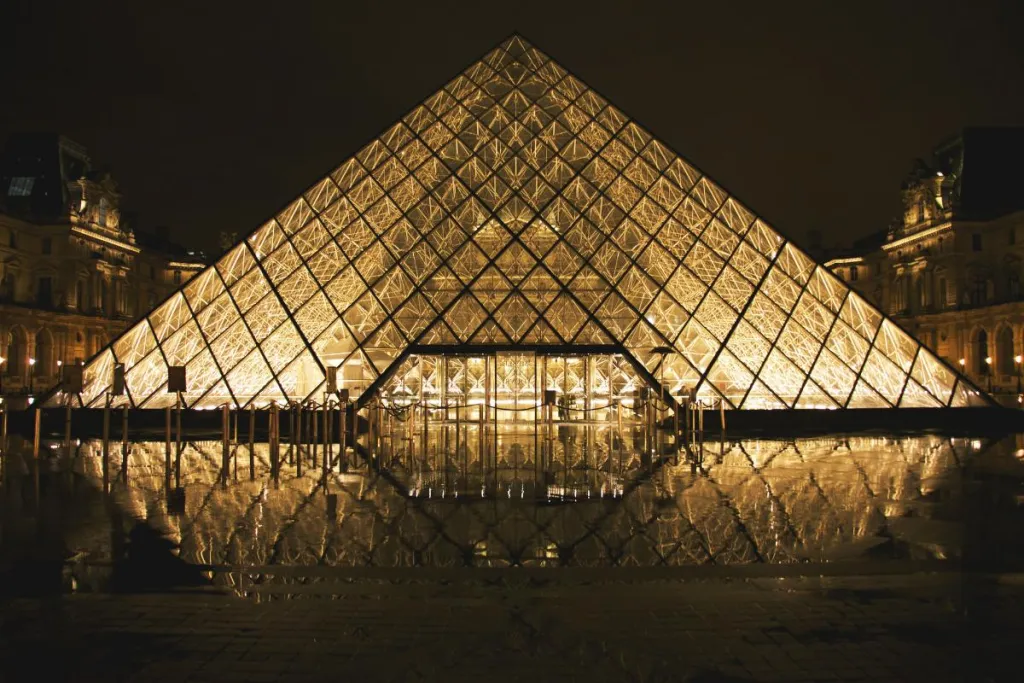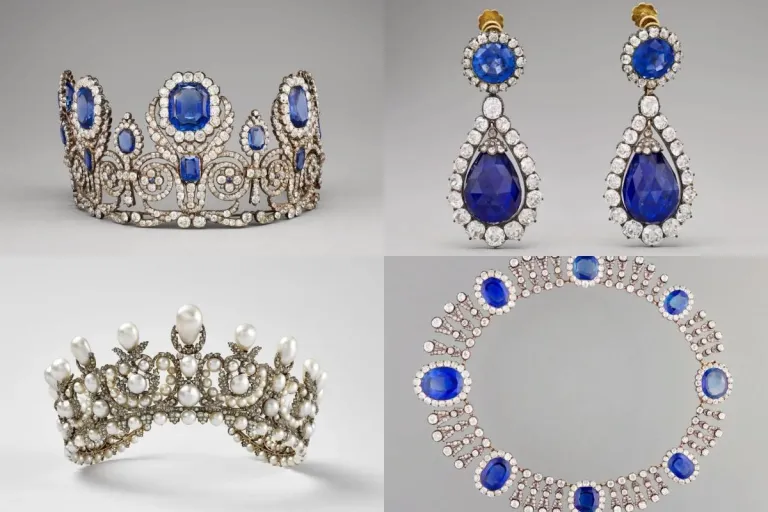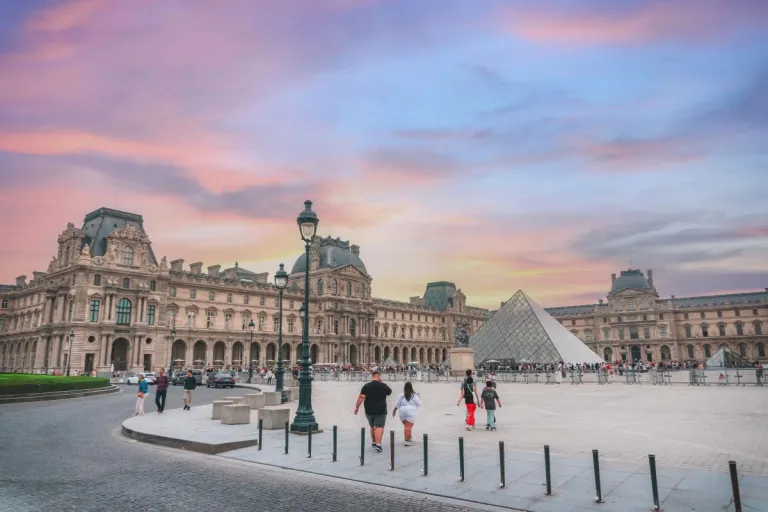Just beware of these common mistakes!
The Louvre Jewellery Heist: What Happened And What Muslim Travellers Should Know Before Visiting Paris

In a heist that sounds straight out of a movie, thieves armed with power tools pulled off one of the most daring robberies in recent French history, targeting the country’s priceless crown jewels in broad daylight. As investigators comb through the scene, the Louvre remains closed, leaving many tourists (including those planning their long-awaited Paris trip) with cancelled visits and refunded tickets.
Here’s everything we know so far about the Louvre jewellery heist — and what Muslim travellers should know if they’re planning to visit once the museum reopens.
Also read: Muslim Travel Guide to Paris for First Timers
How the robbery happened

Image credit: Lemaret Pierrick | Canva Pro
It all went down on a quiet Monday morning. Around 9:30 am — just after the museum opened its doors to visitors — a group of four masked robbers arrived in a vehicle equipped with a mechanical lift. Using it to reach a first-floor balcony of the Galerie d’Apollon (Gallery of Apollo), which overlooks the River Seine, they cut their way in through a window with power tools.
Once inside, they reportedly threatened guards and smashed through two display cases containing historic jewels. Within just four minutes, they grabbed what they came for and fled on two scooters waiting outside — all before 9:38 am.
French media later revealed that one in three rooms in the targeted area didn’t have CCTV cameras, and that a localised alarm in the gallery was broken. The museum’s wider alarm system did go off, prompting security staff to act quickly and evacuate the area.
The thieves even tried to set fire to their vehicle outside but were stopped by a quick-thinking staff member. The French Culture Minister later confirmed that the robbers appeared “calm and experienced,” suggesting the entire plan was well-rehearsed and likely organised by professionals.
What the thieves took
The gang managed to snatch eight precious items — all from the 19th century, once belonging to French royalty and imperial rulers.

Image credit: Louvre Museum | Official Website
Among them were:
A tiara and brooch owned by Empress Eugénie, wife of Napoleon III.
An emerald necklace and earrings once belonging to Empress Marie-Louise.
A sapphire tiara, necklace, and single earring linked to Queen Marie-Amélie and Queen Hortense.
A reliquary brooch, famous for its intricate design.

Image credit: Louvre Museum | Official Website
Each piece was adorned with thousands of diamonds, emeralds, and sapphires. Sadly, experts warn these “priceless” royal jewels might soon be dismantled and sold off, as thieves often melt the metals and recut the stones to avoid detection.
Not all hope is lost, though — Empress Eugénie’s crown was found nearby, albeit damaged, after being dropped during the escape.
The fallout: France reacts

Image credit: Alfredo Hernandez | Canva Pro
The heist has caused a national outcry. French President Emmanuel Macron called it “an attack on our history,” while opposition figures labelled it “a wound to the French soul.” Even French Senator Natalie Goulet voiced her frustration, saying it was “difficult to understand how it happened so easily.”
In total, about 60 investigators are now on the case, studying CCTV footage and tracing the robbers’ getaway route. Authorities believe the group was working under orders from a criminal organisation.
For now, the Louvre Museum remains closed, with no official reopening date announced yet. Visitors who already booked tickets are being automatically refunded, and metal barricades have been set up around the museum’s famous glass pyramid entrance.
A quick history of Louvre heists

Image credit: Gurvan Roland; Chinar Minar | Canva Pro
This isn’t the first time the Louvre has been at the centre of an art world scandal. In 1911, the Mona Lisa itself was stolen by a museum employee — who simply took it off the wall and hid it under his coat! It was recovered two years later, and that theft ironically made the painting the world-famous icon it is today.
Since then, the Louvre has beefed up its security, especially around the Mona Lisa, which now sits safely behind bulletproof glass. But despite these measures, France has seen several other museum thefts in recent years — including a €9.5 million porcelain heist in Limoges just last month, and an armed robbery at the Hieron Museum in Burgundy late last year.
Also read: Mona Lisa Relocation 2031: What Muslim Travellers Should Know About the Louvre Makeover
What this means for travellers (especially Muslim visitors)

Image credit: Hotel Del Esperance | Official Website
For now, the Louvre remains closed, but Paris is still very much open. Muslim travellers planning a trip to the city can still fill their itineraries with plenty of nearby attractions.
While the Louvre investigates, travellers can explore the Musée d’Orsay across the Seine, which houses stunning Impressionist art, or take a peaceful walk through the Tuileries Garden, right beside the museum.
Those looking for halal-friendly dining options near the Louvre won’t have to go far — popular spots like Noura (Lebanese cuisine), Le Wok Saint-Honoré, and New Jawad offer certified halal menus within walking distance. For prayer, the Grand Mosque of Paris, one of Europe’s most beautiful mosques, is just a short metro ride away.
So while it’s a huge loss for France’s cultural heritage, visitors can still make the most of their Paris trip — with the comfort of knowing the city’s museums, mosques, and halal eateries are ready to welcome them.
Final thoughts
The Louvre jewellery heist is more than just a headline — it’s a stark reminder that even the world’s most iconic landmarks aren’t immune to crime. But as France ramps up its security and restoration efforts (with an €800 million “New Renaissance” project already underway), travellers can rest assured that the museum will eventually reopen, stronger and safer than ever.
For now, the mystery continues. And when the Louvre’s doors finally reopen, visitors — Muslim and non-Muslim alike — will return, drawn once again to the world’s greatest treasury of art, history, and human creativity.
Published at
About Author
Aimi Zulkiflee
Subscribe our Newsletter
Get our weekly tips and travel news!
Recommended Articles
5 Mistakes to Avoid When Traveling During Shoulder Season (Especially for Muslim Travellers) First 99 Speedmart Outside Malaysia Opens in Fuzhou – Here’s What’s Inside 99 Speedmart makes its first international move – Hello, Fuzhou, China!
Abu Dhabi Resort is Voted “Most Instagrammable Hotel in the World”! Anantara Qasr al Sarab Desert Resort, a five-star property set within the Liwa Desert, will leave you clicking your cameras non-stop.
Air Busan Prohibits Power Banks in Overhead Bins Starting February 2025 Power banks must remain with passengers at all times!
Air India Flight 171 Crashes After Takeoff From Ahmedabad With 242 Onboard Our deepest condolences to the victims and everyone involved.
Latest Articles
Hong Kong Apartment Fire Disaster: Wang Fuk Court Tragedy Claims 44 Lives, 279 Missing The fire at Wang Fuk Court is now the deadliest residential blaze Hong Kong has experienced in decades.
8 Best Halal Hainanese Chicken Rice Spots in Singapore for Budget Travelers Halal, tasty, and affordable!
Beast Land Riyadh 2025: MrBeast’s Theme Park Opens With Rides, Challenges & Muslim-Friendly Tips Experience the exclusive MrBeast’s theme park from 13 Nov to 27 Dec 2025!
11 Must-See Winter Illuminations in Osaka 2025–2026 for Muslim Travellers Experience winter in Osaka with lights, snow & festive fun
What Travellers Need to Know About Indonesia's Mount Semeru Eruption Mount Semeru’s status raised to alert level

